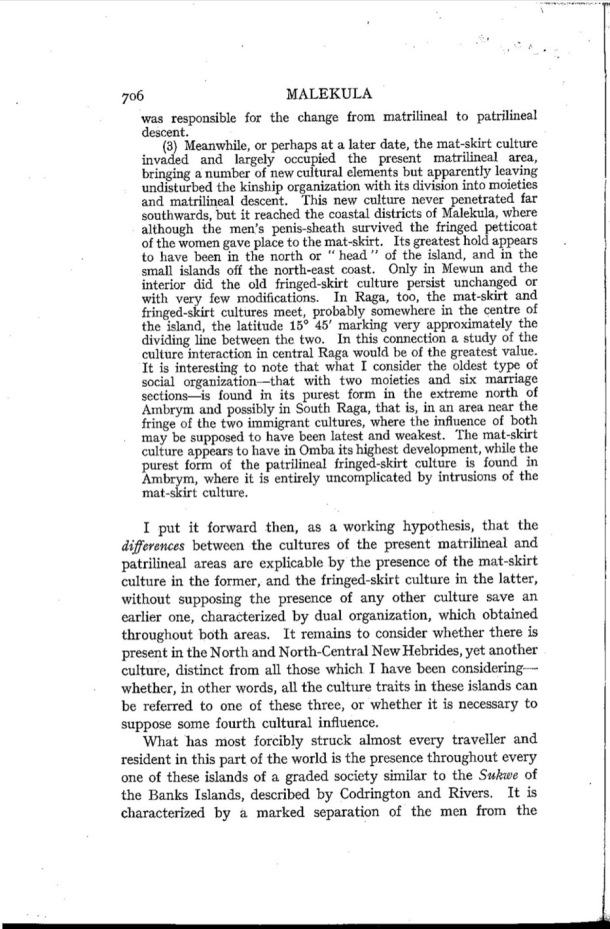|
|  [Note: this transcription was produced by an automatic OCR engine]
706 MALEKULA
was responsible for the change irom inatrilineal to patrilineal
descent.
(tge Meanwhile, or perhaps at a later date, the mat-skirt culture
inva d and largely occupied the present rnatrilineal area,
bringing a number of new cultural ELEMENTS but apparently leaving
undisturbed the kinship organization with its division into moieties
and matrilineal descent. This new culture never penetrated far
southwards, but it reached the coastal districts of Malekula, where
although the men’s penis-sheath survived the fringed petticoat
of the women gave place to the mat-skirt. Its greatest hold appears
to have been in the north or " head " of the island, and in the
small islands oif the north-east coast. Only in Mewun and the
interior did the old fringed-skirt culture persist unchanged or
with very iew modiï¬Åcations. In Raga, too, the mat-skirt and
fringed-skirt cultures meet, probably somewhere in the centre of
the island, the latitude 15° 45’ marking very approximately the
dividing line between the two. In this connection a study of the
culture interaction in central Raga would be of the greatest value.
It is interesting to note that what I consider the oldest type of
social organization—that with two moieties and six marriage
sections—is found in its purest form in the extreme north of
Ambrym and possibly in South Raga, that is, in an area near the
fringe of the two immigrant cultures, where the influence of both
may be supposed to have been latest and weakest. The mat~skirt
culture appears to have in Omba its highest development, while the
purest iorrn of the patrilineal fringed-skirt culture is found in
Ambr m, where it is entirely uncomplicated by intrusions of the
mat-skirt culture.
I put it forward then, as zi working hypothesis, that the
diï¬Åerences between the cultures of the present matrilineal and
patrilincal areas are cxplicable by the presence of the mat-skirt
culture in the former, and the fringed-skirt culture in the latter,
without supposing the presence of any other culture save an
earlier one, characterized by dual organization, which obtained
throughout both areas. It remains to consider whether there is
present in the North and North-Central New Hebrides, yet another
culture, distinct from all those which I have been considering-
whether, in other words, all the culture traits in these islands can
be referred to one of these three, or whether it is necessary to
suppose some fourth cultural influence.
What has most forcibly struck almost every traveller and
resident in this part of the world is the presence throughout every
one of these islands of a graded society similar to the Sukwe of
the Banks Islands, described by Codrington and Rivers. It is
characterized by a marked separation of the men from the
.-in
|